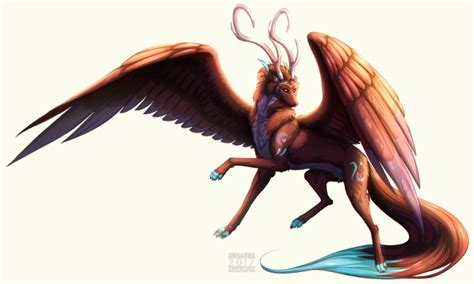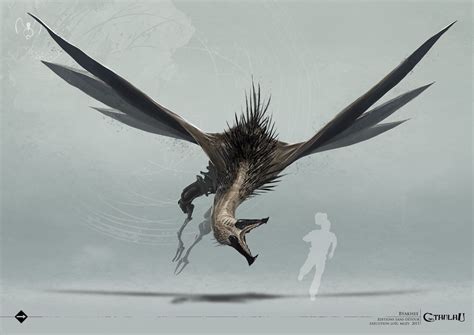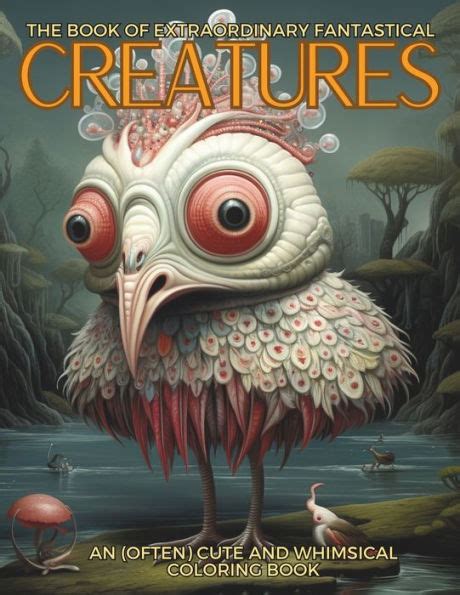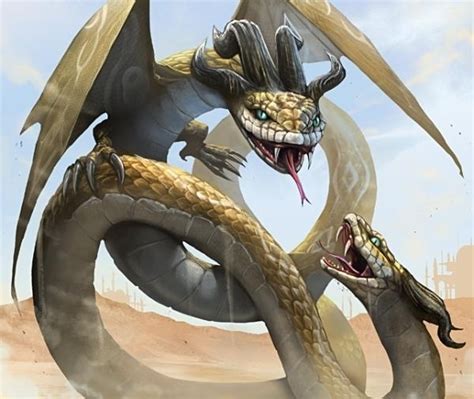Within the vast expanses of our collective imagination exist a universe of ethereal birds, creatures crafted from dreams and legends. These magnificent beings, with their resplendent plumage and mysterious allure, have captivated human minds for centuries. While their existence may be confined to the realms of fantasy, the impact they have had on art, literature, and culture is very real.
Delving deeper into the realm of mythical avian creatures, one cannot escape the enchanting allure they possess. These creatures, often depicted with majestic wings and otherworldly features, embody the essence of the fantastical. They stir our souls, evoking a sense of wonder and curiosity as we navigate through their mesmerizing tales.
Legends from various cultures around the world beckon us towards a journey into a dreamscape where these elusive birds reside. In ancient folklore, one encounters the fiery Phoenix, a symbol of rebirth and immortality, rising from its own ashes with unmatched grace. Further afield, the thunderbird reigns supreme in the mythology of Native American tribes, soaring through the skies with power and authority, revered as a deity of immense strength and protection.
From the legendary thunderbird to the ethereal harpies and the graceful Simurgh, each culture's avian myths offer a gateway to a parallel existence that sparks our limitless imagination. These mythical creatures, both fearsome and wondrous, are interwoven in the fabric of human narrative, serving as metaphors for our deepest desires, fears, and aspirations.
Embarking on this exploration, we shall uncover the symbolism behind these imaginary feathered beings, as well as the cultural significance they hold throughout history. We shall decode the messages they convey and unravel the secrets they guard, unearthing the profound impact they continue to exert on our artistic and literary spheres.
The Significance of Imaginary Winged Beings in Mythology and Folklore

Across various cultures and throughout history, mythical winged creatures have held a profound and enduring place in the realm of belief systems and traditional narratives. These ethereal beings, often symbolizing beauty, power, or transcendence, have captivated the human imagination for generations.
In mythology and folklore, these fantastical winged beings serve as powerful symbols and entities, representing a multitude of ideas and beliefs. From divine messengers to embodiments of divine forces, these creatures embody the human desire for flight and the pursuit of higher realms.
Examples of these mythical avian creatures can be found in ancient Greek, Norse, and Egyptian mythologies, as well as in Native American and indigenous African folklore. The phoenix, for instance, is widely recognized as a mythical bird known for its ability to rise from its own ashes, representing cycles of renewal and rebirth.
Some winged beings, like the harpies or thunderbirds, take on more menacing roles, representing chaos and destruction. These creatures exemplify the dual nature of avian creatures in mythology and folklore, where they can be both protectors and harbingers of doom.
Moreover, these imaginary winged creatures often find their way into various forms of artistic expression. They grace the pages of ancient manuscripts, decorate temple walls, and inspire countless paintings and sculptures. Through these artistic representations, the significance and allure of these mythical beings continue to endure.
Whether divine or malevolent, these imaginary avian creatures have become deeply ingrained in our collective consciousness, reminding us of the power of imagination and the perennial fascination humanity has with the ethereal world of winged beings.
The Significance of Imaginary Birds in Dreams
Exploring the psychological implications of imaginary birds in one's dreams reveals a fascinating realm where the mind conjures up ethereal avian creatures that hold deeper meanings and symbolism. These dream-like birds, although figments of the imagination, carry a significant psychological weight that transcends their non-existent nature.
When individuals dream of imagined birds, these fantastical creatures often represent hidden desires, unfulfilled aspirations, or even fears and anxieties. The absence of concrete avian beings allows the mind to freely manifest symbolic representations that touch upon our innermost emotions and psychological states.
The imagery of imagined birds in dreams can take various forms, showcasing the vastness of the human psyche. Some may dream of majestic mythical birds with vibrant plumage, symbolizing a longing for freedom and self-expression. Others might encounter dark and ominous imaginary birds, mirroring feelings of impending doom or unresolved conflicts.
Furthermore, imaginary birds serve as messengers from the subconscious, delivering profound messages that impact our waking lives. They offer a unique channel for the mind to communicate and process emotions, allowing individuals to gain insights into their deepest desires, unresolved issues, and potential paths for personal growth and self-discovery.
Understanding the psychological significance of dreaming about imaginary birds enables individuals to unlock hidden aspects of their psyche. By recognizing the symbolic nature of these avian beings, one can delve into the subconscious realm and embark on a journey of self-reflection and self-realization. Exploring the depths of our minds through the lens of imaginary birds unveils a captivating tapestry of human emotions and experiences that expands our understanding of the self.
Exploring the Artistic Representations of Fantastical Winged Beings

In this section, we will delve into the mesmerizing world of artworks showcasing mythical and ethereal winged creatures. We will explore various renditions of these fantastical beings, examining the creative interpretations and symbolism depicted in their art.
Throughout history, artists have been captivated by the allure of imagined avian beings, etching their unique visions onto canvas or sculpting them into three-dimensional forms. These masterpieces often go beyond the realm of reality, drawing inspiration from folklore, mythology, and the depths of imagination.
Through their skilled brushstrokes or expert carving techniques, artists bring to life a multitude of avian creatures that exist solely in the realms of fiction and daydreams. These artistic representations embody a vast array of qualities, ranging from majestic and elegant to mysterious and ethereal.
Some artistic depictions showcase winged beings with majestic plumage, adorned with vibrant colors that dazzle the eye. Others focus on the delicacy of their wings, intricately depicting every feather with remarkable detail. Each stroke of the artist's brush or chisel offers a glimpse into the artist's imagination, inviting viewers to immerse themselves in a world where reality and fantasy intertwine.
Alongside their aesthetic beauty, these imaginative avian creatures often hold deeper symbolic meanings. They are often portrayed as embodiments of freedom, grace, and transcendence, evoking a sense of wonder and awe in those who behold them. Their portrayal in art allows us to contemplate the boundaries of the possible and question the limitations of our own reality.
As we embark on this exploration, let us witness the extraordinary talents of artists as they bring to life these mythical winged beings, inspiring us to embrace the fantastical and ignite our own flights of fancy.
The Symbolism of Fantastical Birds in Literature and Poetry
Within the captivating realm of literary and poetic works, imaginary avian creatures hold a profound significance that extends beyond their fantastical nature. These ethereal beings, with their elusive charm and mesmerizing allure, serve as powerful symbols that convey a range of profound and universal themes.
Imaginary birds in literature and poetry often embody notions of freedom, transcendence, and unattainable beauty. These mythical creatures, with their graceful wings and enchanting melodies, evoke a sense of longing and aspiration in the hearts of readers and listeners alike. Their elusiveness mirrors the intangible nature of human desires, reminding us of the delicate balance between the tangible and the ephemeral.
Moreover, these avian entities often become allegories for the human condition, encapsulating emotions and experiences that are otherwise ineffable. They serve as conduits through which writers and poets explore themes of isolation, transformation, and the pursuit of dreams. In their otherworldly existence, these fantastical birds offer a means of traversing the boundaries of reality, enabling both the authors and the audience to delve into the depths of their imaginations.
The symbolism of imaginary birds also extends to notions of hope and inspiration. These ethereal beings, with their luminescent feathers and celestial allure, become messengers of possibility in a world burdened by limitations. They invoke a sense of wonder and curiosity, urging readers and listeners to embrace the unknown and to seek solace in the beauty of creation.
| Key Symbolic Attributes | Interpretation |
|---|---|
| Feathers | Represent the ephemeral and intangible nature of dreams and desires. |
| Song | Symbolize the power of expression and the ability to evoke emotions beyond words. |
| Flight | Signifies independence, freedom, and the ability to transcend earthly limitations. |
| Colors | Convey a range of emotions and moods, from vibrant joy to somber melancholy. |
Overall, the symbolism of imaginary birds in literature and poetry weaves rich tapestries of emotions, thoughts, and ideas, bringing forth a deeper understanding of the human experience. Through their ethereal nature and metaphorical resonances, these fantastical creatures inspire our imaginations, evoke our deepest yearnings, and beckon us to embrace the beauty and mysteries of the world.
The Impact of Fantastical Feathered Beings in Popular Culture

The ubiquitous presence of fantastical avian creatures in various forms of popular culture has had a profound influence on society. These mythical beings, often portrayed as majestic and mysterious, captivate the imagination and spark a sense of wonder in individuals across different generations and cultures.
From ancient folklore and mythological tales to contemporary literature, movies, and video games, imaginary avian creatures have dominated the creative landscape, leaving an indelible mark on our collective consciousness. These ethereal beings, with their exotic plumage, supernatural abilities, and mythical origins, continue to enchant and inspire people in various facets of popular culture.
One notable area where these imaginary avian creatures have made a significant impact is in visual arts and design. Their elegant forms and vibrant colors have been captured in intricate illustrations, paintings, and sculptures, adorning everything from book covers to album art and fashion accessories. These fantastical beings have become a popular subject for artists, who seek to convey a sense of beauty and magic through their creations.
Moreover, the influence of these mythical feathered beings can be seen in the realm of storytelling. Countless novels, comic books, and graphic novels feature avian creatures as central characters or important elements of the narrative. These creatures often serve as symbolic representations of various aspects of human nature and desires, exploring themes such as freedom, transformation, and the pursuit of dreams. Their inclusion adds depth and richness to the stories, allowing readers to delve into fantastical realms and experience extraordinary adventures.
Additionally, the impact of imaginary avian creatures can be observed in the realm of entertainment. Movies, both animated and live-action, frequently incorporate these fantastical beings into their plots, offering audiences a visual spectacle and a thrilling escape from reality. Whether showcased as wise and benevolent allies or formidable adversaries, these avian creatures add an element of intrigue and excitement to the cinematic experience.
Furthermore, the realm of gaming has not been immune to the allure of fantastical avian creatures. From iconic video game characters like the legendary phoenix to imaginative creatures that grace the virtual landscapes, these beings have become integral parts of many gaming franchises. They embody power, mystery, and wisdom, captivating gamers and creating immersive and engaging gaming experiences.
In conclusion, the influence of imaginary avian creatures in popular culture is undeniable. These elusive beings have left an indelible mark on various creative fields, from arts and design to storytelling and entertainment. Their allure, both visually and thematically, continue to captivate and inspire enthusiasts worldwide, ensuring their continued presence in the cultural tapestry of human imagination.
The Evolution of Fantastical Birds in Diverse Cultures Around the Globe
In various civilizations worldwide, the concepts of mythical avian creatures have undergone a fascinating transformation over centuries. These ethereal beings, symbolic of various qualities and beliefs, have held a significant place in the collective imagination of societies throughout history. By examining the evolution of imaginary birds across different cultures, we can gain insight into the diverse interpretations and cultural significance attributed to these mythical creatures.
Symbolic Representation and Cultural Beliefs:
Imaginary birds, revered for their beauty, power, and symbolism, have long enchanted human beings. From the phoenix, associated with rebirth and immortality, to the roc, symbolizing strength and magnificence, these mythical creatures have consistently served as potent metaphors in cultural narratives across the globe. While some cultures depict these fantastical birds as protectors and guardians, others emphasize their role as messengers or even omens. Examining the different beliefs and values associated with imaginary birds offers a window into the diverse spiritual and philosophical traditions of various civilizations.
Regional Variations and Folklore:
The evolution of imaginary birds showcases fascinating regional variations and influences. As these creatures traveled through cultural exchange and migration, new stories, beliefs, and interpretations shaped their characteristics and significance. For instance, in East Asian cultures, the legendary Fenghuang possesses both male and female qualities, symbolizing harmony and balance. In contrast, Native American folklore often portrays Thunderbirds as powerful deities associated with lightning and storms, exemplifying the interweaving of nature and spirituality. By examining these regional variations, we can unravel the intricacies of local folklore and better understand the distinct cultural identities that emerged.
Artistic Representation and Visual Symbolism:
The progression of imaginary birds can also be traced through artistic representations found in various mediums, such as paintings, sculptures, and textiles. Artists throughout history have used their creativity to bring these fantastical creatures to life, infusing them with cultural nuances and symbolisms. Whether it be the intricate patterns of Mesoamerican featherwork or the ornate depictions in medieval manuscripts, these artistic renderings not only serve as visual delights but also offer valuable insights into the evolving aesthetics and artistic techniques of different cultures.
Contemporary Relevance and Popularity:
Even in contemporary times, imaginary birds continue to captivate and inspire people. From fantasy literature to modern-day interpretations in film and animation, the allure of these mythical creatures persists. The ongoing fascination with imaginary birds highlights their enduring appeal across generations and their ability to transcend cultural boundaries. By exploring their current resonance, we can observe how these creatures have evolved to reflect contemporary values and popular culture.
In conclusion, the evolution of imaginary birds in diverse cultures illustrates the rich tapestry of human imagination and creativity. Through examining their symbolic representation, regional variations, artistic depictions, and contemporary relevance, we can gain a deeper appreciation for the cultural significance of these mystical creatures and the ways in which they continue to shape our collective consciousness.
The Enchanting Tales and Myths Binding Ethereal Winged Creatures

Step into a captivating realm where fantastical avian beings exist beyond the realm of reality, captivating the imaginations of generations. Countless legends and lore have woven intricate narratives around these ephemeral creatures, enchanting the minds of individuals across cultures and time. Whether regarded as symbols of wisdom, freedom, or divinity, these mythical birds have permeated the collective consciousness, leaving an undeniable mark on human history.
In these enchanting tales, the celestial bird takes flight, soaring through the limitless expanse of the heavens. Legends tell of its radiant plumage, reflecting the hues of the sunrise and sunset, evoking awe and wonder. Its melodic songs, hauntingly beautiful and ethereal, are said to have the power to heal the wounded soul and soothe the weary mind.
Across diverse cultures, these avian creatures have been interpreted in various ways, each carrying its own symbolic significance. The phoenix, reborn from the ashes of its predecessor, is an emblem of resilience, immortality, and the cyclical nature of life. The thunderbird, a formidable avian deity in Native American mythology, is believed to harness the power of thunder and lightning, representing strength and protection.
The legends surrounding these imaginary birds often intertwine with human desires and aspirations. They serve as reminders of the extraordinary potential within each individual, encouraging us to embrace our inner strengths and venture into unknown territories. These mythical creatures ignite the flames of imagination and inspire countless works of literature, art, and music. Their timeless presence continues to captivate and enthrall, leaving an indelible mark on the tapestry of human creativity.
Decoding the Hidden Symbolism in Visions of Fantastical Winged Beings
Delving into the realm of slumber-induced imagery, we embark upon a captivating exploration of the profound significance concealed within nocturnal apparitions featuring mystical winged creatures. By unraveling the enigmatic messages conveyed through these symbolic avian entities, we gain a deeper understanding of our subconscious desires, fears, and aspirations.
Unlocking the Veiled Wisdom: As we traverse the ethereal landscapes of our dreams, we encounter majestic beings that exist solely within the realm of imagination. These elusive avian creatures possess a profound ability to transcend the limitations of reality, serving as emissaries of hidden wisdom and insight. To decipher the concealed meanings behind these phenomenal apparitions, we must embrace the intangible and tap into the esoteric language of symbolism.
The Power of Symbolic Flight: The notion of flight, embodied by these imagined avian entities, serves as a poignant metaphor for the human longing for liberation and transcendence. Through their graceful movements across the celestial skies, these ethereal creatures beckon us to break free from the constraints of our earthly existence, urging us to soar towards personal growth and enlightenment.
A Kaleidoscope of Avian Archetypes: Within the vast realm of dreams, our visionary experiences provide us with a myriad of unique avian creatures, each imbued with its own distinct symbolism. The phoenix, a symbol of rebirth and regeneration, represents the transformative power of overcoming adversity. The harpy, with its combination of human and bird features, embodies the dualities within our own nature, reminding us of the need for balance and integration.
Unearthing Personal Reflections: The interpretation of dreams featuring imaginary avian creatures necessitates a deeply personal interpretation, as the symbolism encountered within these visions is inherently connected to one's own experiences, emotions, and subconscious. By delving into the hidden meanings behind these aerial marvels, we can embark upon a profound journey of self-discovery and introspection.
Embarking on this voyage of ethereal exploration, we are beckoned to unravel the enigmatic symbolism concealed within our dreams of fantastical winged creatures. Through a conscientious analysis and a willingness to embrace the intangible, we can unravel the profound messages hidden within the realm of our slumbering minds.
FAQ
Why do people dream about imaginary avian creatures?
People often dream about imaginary avian creatures as a way to escape reality and explore their creativity. These dreams may also be influenced by a deep fascination with birds and their symbolism.
Are there any cultural beliefs or superstitions associated with imaginary avian creatures?
Yes, in many cultures, imaginary avian creatures are seen as messengers from the spiritual realm. They are often associated with good luck, protection, and guidance. These beliefs have been passed down through generations.
What are some common characteristics of imaginary avian creatures?
Imaginary avian creatures can have a variety of characteristics, but some common ones include vibrant and unusual colors, the ability to transcend physical limitations such as flying without wings, and the possession of magical powers.
Do dreams about imaginary avian creatures have any psychological meaning?
From a psychological perspective, dreams about imaginary avian creatures can represent the dreamer's desire for freedom, creativity, or the need to break free from constraints. These dreams may also reflect the dreamer's imagination and their wish to explore new possibilities.
Are there any famous myths or stories involving imaginary avian creatures?
Yes, there are several famous myths and stories involving imaginary avian creatures, such as the phoenix from Greek mythology, the roc from Arabian mythology, and the garuda from Hindu mythology. These creatures are often portrayed as powerful and majestic.
What is the article "Dreaming about an Illusory Bird: The Fascinating World of Imaginary Avian Creatures" about?
The article explores the captivating realm of imaginary bird creatures and their presence in dreams.



